Microsoft's Diagnostics Tracking Service: What Your Business Should Know
by Stephanie Faris on Monday, September 07 6:00
For many businesses, IT security is a top concern. This is especially true as applications and data move to the cloud, where they are managed by third-party services. When they make the decision to outsource to the cloud, business leaders want to believe that their data remains private, secure from prying eyes. But new information about Microsoft s tracking practices has raised new concerns about data privacy.
The technology in question is Microsoft s Diagnostics Tracking Service, which released in April as update KB 3022345. The update promised to improve the overall application experience by collecting information on interactions with Microsoft Windows 7 and 8. Microsoft promises that no contact information is collected and customers won t be asked to participate in annoying surveys. However, many IT experts have expressed concerns about the tracking service, citing a lack of clarity on the information that is being transmitted to Microsoft.
Growing Concerns
The trouble started when some highly-capable experts examined the code behind KB 3022345 and determined that it was a usage tracker. Since that time, Microsoft has released multiple updates to the patch, only further calling attention to the patch. IT professionals are concerned about the information being collected and sent to Microsoft, since the software company isn t rushing to provide details to the public about it.
Businesses that have already upgraded to Windows 10 aren t free from those concerns. The feature first drew concern because it was included in Windows 10. Instead of removing the tracking features from Windows 10 when customers complained, Microsoft decided to duplicate the technology in its older operating systems.
Disabling the Service
If your business is concerned about the information Microsoft is collecting, the diagnostics tool can actually be disabled. Experts have found that the software isn t necessary for Windows 7, 8, or 10 to function, so IT professionals can disable it through a few simple steps. Simply tap on the Windows key and type the word services, then hit enter. Double-click on Diagnostics Tracking Service and go to the Startup menu. Disable startup on Diagnostics Tracking Service by checking the disabled box. Click Stop to stop the service from running without rebooting.
Server administrators and IT professionals can protect user devices by preventing the updates from installing in the first place. The following updates relate to Microsoft s Diagnostic Tracking Service and should be disabled for Windows 7 and 8 machines:
- kb 3068708
- kb 3022345
- kb 3075249
- kb 3080149
While disabling them, be sure to hide them to prevent them from automatically installing in the next update push. This software is built into Windows 10, so your only option will be to disable it on each device. Once disabled, watch for future security patches from Microsoft that might be designed to enable the tracking feature in a different way on devices where it has been disabled.
While Microsoft may not be collecting contact information and company data, businesses have reason to be concerned about a software provider that tracks behaviors. If your business is concerned about information being leaked, you can follow steps to disable it in startup and prevent future downloads through disabling certain updates.
